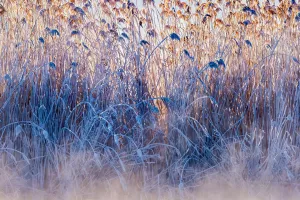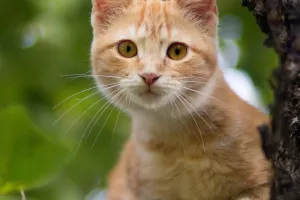Different birds choose different 'tools' to build their nests, and the final nests take on different shapes. Swallows, for example, use their saliva to mix mud, dead grass and twine into small balls of mud and then pile them up to make their nests. The magpie nest, too, looks like a pile of dead branches cluttering up a bird's nest from a distance, but this is not really the case. Firstly, the outside of the magpie's nest, from the outside, does appear to be made up of a number of thicker dead branches, but as a whole, it is a ball. Secondly, there is something else inside the nest, which I discovered when I first saw it many years ago after a large tree had been sawed off at my house. Inside is a 'bed' of soft grass, which is very soft.
The magpie's nest, although open upwards, had a lid of sorts, which was made of smaller twigs than the thick dead branches of the nest, and was very thick. It became clear to me then that the magpie is a master builder, not only building nests like other birds, but also making them very comfortable and taking shelter from the wind and rain into account.
The reason why birds choose different nest structures is naturally due to evolution, which has led them to evolve nest structures that are beneficial to them. The reason most nest openings face upwards is simply that the eggs do not fall easily due to shaking and if the wind ever causes them to fall to the ground and break, the bird has evolved to be lonely. An "open-air, top-facing" nest is not only easier to build, but also for the safety of the young. In case of danger, the upward-facing nest allows them to fly away quickly.
They do not panic in the event of rain, as the birds are very clever, as can be seen from the materials and techniques they use to build their nests. When they build their nests they tend to choose parts of trees with dense foliage so that even if it rains the dense foliage will keep out some of the rain and even if any water does fall on the nest there will be little left, and most nests are made of hay so even if rain falls on the nest it will penetrate.
For adult birds, their bodies secrete a waterproof grease, so their feathers can be waterproof under certain conditions, and there are many fine hairs underneath the large feathers which have a certain warming effect. We usually see birds getting wet in the rain, but they do not get sick easily.
However, if the wind and rain are too strong, the bird's parents will spread their wings to firmly protect their young, who are not afraid of the rain, and they will apply grease to their feathers, which will act as a water repellent. As the young bird's body resistance is still very low, the parents usually do not allow the feathers of their young to get wet and it is very difficult for the young to get caught in the rain while in the care of the parents so that the young bird can use its body heat to keep warm and avoid frostbite.


